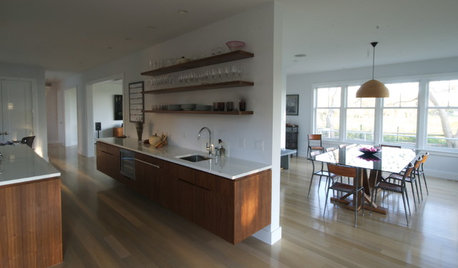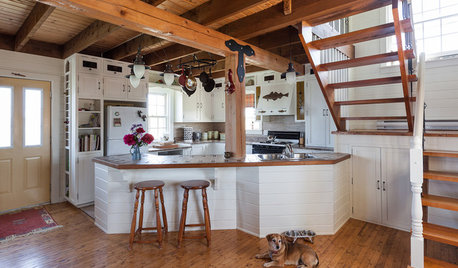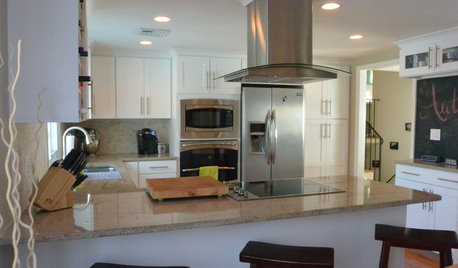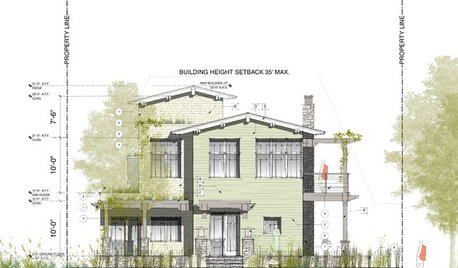Biggest bang for the $ - reduce electical/cooling demand
wizard19
12 years ago
Related Stories

REMODELING GUIDESCool Your House (and Costs) With the Right Insulation
Insulation offers one of the best paybacks on your investment in your house. Here are some types to discuss with your contractor
Full Story
KITCHEN DESIGNThe 4 Things Home Buyers Really Want in Kitchen Cabinetry
For the biggest return on your kitchen investment, you've got to know these key ingredients for cabinetry with wide appeal
Full Story
GREEN BUILDINGGoing Solar at Home: Solar Panel Basics
Save money on electricity and reduce your carbon footprint by installing photovoltaic panels. This guide will help you get started
Full Story
LIFECould Techies Get a Floating Home Near California?
International companies would catch a big business break, and the apartments could be cool. But what are the odds of success? Weigh in here
Full Story
GREEN BUILDINGInsulation Basics: Heat, R-Value and the Building Envelope
Learn how heat moves through a home and the materials that can stop it, to make sure your insulation is as effective as you think
Full Story
KITCHEN DESIGNOpen vs. Closed Kitchens — Which Style Works Best for You?
Get the kitchen layout that's right for you with this advice from 3 experts
Full Story
BEFORE AND AFTERSA ‘Brady Bunch’ Kitchen Overhaul for Less Than $25,000
Homeowners say goodbye to avocado-colored appliances and orange-brown cabinets and hello to a bright new way of cooking
Full Story
FLOORSWhat to Ask When Considering Heated Floors
These questions can help you decide if radiant floor heating is right for you — and what your options are
Full Story
ARCHITECTUREThink Like an Architect: How to Pass a Design Review
Up the chances a review board will approve your design with these time-tested strategies from an architect
Full Story
SAVING WATER11 Ways to Save Water at Home
Whether you live in a drought-stricken area or just want to help preserve a precious resource, here are things you can do to use less water
Full Story






neohioheatpump
SaltiDawg
Related Professionals
Maple Grove Solar Energy Systems · Norwich Solar Energy Systems · West Jordan Solar Energy Systems · Delray Beach Home Automation & Home Media · Evanston Home Automation & Home Media · Garden Grove Home Automation & Home Media · Pittsburgh Home Automation & Home Media · Poway Home Automation & Home Media · Weymouth Home Automation & Home Media · Annandale Home Automation & Home Media · Concord Electricians · Lexington Electricians · Columbine Fireplaces · Rockville Fireplaces · San Tan Valley Fireplacesionized_gw
ionized_gw
david_cary
SaltiDawg
david_cary
wizard19Original Author
energy_rater_la
SaltiDawg
wizard19Original Author
neohioheatpump
ionized_gw
DickRNH
weedmeister
wizard19Original Author
ionized_gw
david_cary
energy_rater_la
david_cary
ionized_gw
david_cary
energy_rater_la
neohioheatpump
wizard19Original Author
energy_rater_la
countryboymo
wizard19Original Author
SaltiDawg
juliekcmo
Servicetech